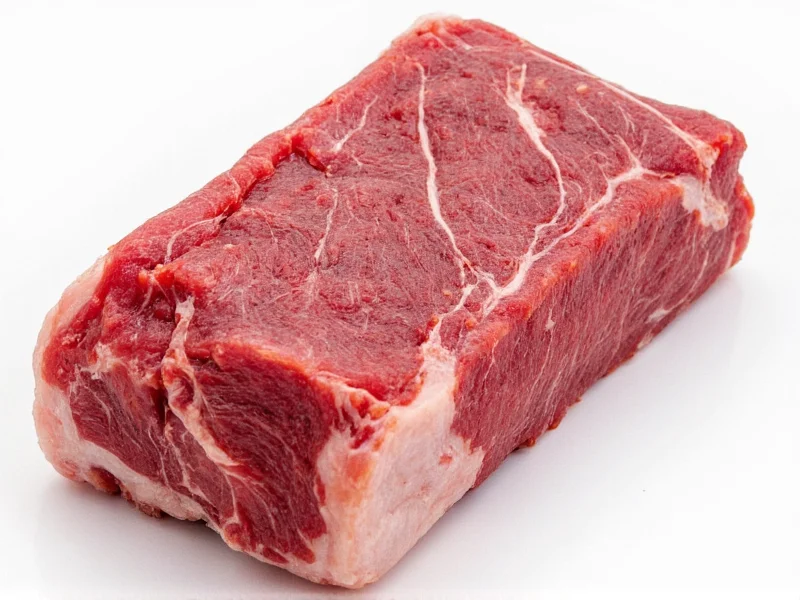Understanding Beef Short Ribs vs. Pork Spare Ribs
When selecting ribs for your next meal, understanding the fundamental differences between short ribs and spare ribs is crucial for achieving optimal results. Despite both being called "ribs," these cuts come from different animals, distinct anatomical locations, and require specialized cooking approaches to maximize their unique qualities.
What Are Short Ribs?
Short ribs are a beef cut taken from the chuck or plate section of the cow, specifically the lower front chest area. Contrary to what the name suggests, "short" refers to the shortened rib bones after butchering, not the length of the entire cut. These ribs contain substantial meat both between and atop the bones, with generous marbling that contributes to their rich flavor profile.
Butchers typically cut short ribs in two primary styles:
- Flanken cut: Thin strips across the bone (about 1/2 inch thick), popular for Korean BBQ
- English cut: Longer sections with meat atop a single bone, ideal for braising
What Are Spare Ribs?
Spare ribs are a pork cut taken from the belly area, specifically the lower portion of the pig's rib cage that remains after the belly is removed to make bacon. These ribs contain less meat between the bones compared to short ribs but feature more fat marbling throughout. The rack typically includes 11-13 bones and extends from the breastbone to the spine.
Spare ribs are often further processed into St. Louis-style ribs by removing the sternum bone, cartilage, and excess fat to create a more uniform rectangular shape that cooks more evenly.
Key Differences Between Short Ribs and Spare Ribs
| Characteristic | Short Ribs (Beef) | Spare Ribs (Pork) |
|---|---|---|
| Animal Source | Cow (beef) | Pig (pork) |
| Anatomical Location | Chuck or plate section (lower front chest) | Belly area (lower rib cage) |
| Bone Structure | Shorter, meaty bones; often cut across | Longer, flatter bones; continuous rack |
| Meat-to-Bone Ratio | More meat atop bones | Less meat between bones |
| Fat Content | Moderate marbling | Higher fat content and marbling |
| Flavor Profile | Rich, beefy, robust | Sweeter, milder pork flavor |
| Best Cooking Methods | Braising, slow cooking, smoking | Grilling, smoking, baking |
| Typical Cooking Time | 3-6 hours (low and slow) | 3-5 hours (225-275°F) |
| Average Price (per pound) | $6-$12 | $3-$8 |
Flavor and Texture Comparison
Short ribs deliver a deeply beefy, robust flavor with substantial meat that becomes incredibly tender when cooked properly. The connective tissue breaks down during slow cooking, creating a rich, gelatinous texture that's succulent and satisfying. When prepared as Korean galbi, the meat becomes almost buttery.
Spare ribs offer a sweeter, milder pork flavor with more fat content that renders during cooking. The meat between the bones becomes tender but maintains more structure than short ribs. The higher fat content contributes to a juicier final product when cooked correctly, with the fat basting the meat from within during the cooking process.
Optimal Cooking Methods
Short ribs excel with low-and-slow cooking methods that break down their substantial connective tissue. Braising in liquid for 3-6 hours at 300°F creates fall-off-the-bone tenderness. They also work well for smoking at 225-250°F until the internal temperature reaches 200-205°F. The 3-2-1 method (3 hours smoke, 2 hours wrapped, 1 hour sauce) produces exceptional results for competition-style short ribs.
Spare ribs benefit from indirect heat methods that render fat without burning. The popular 3-2-1 method (3 hours smoke, 2 hours wrapped in foil with liquid, 1 hour sauce) works exceptionally well. Grilling requires careful temperature control to prevent the higher fat content from causing flare-ups. Many pitmasters recommend removing the membrane on the bone side for better smoke penetration and tenderness.
Price and Availability Considerations
Short ribs typically cost more than spare ribs due to the premium beef source and substantial meat content. Expect to pay $6-$12 per pound for quality short ribs, with grass-fed or specialty varieties reaching even higher prices. They're widely available at butcher shops and larger grocery stores, though the specific cut (flanken vs. English) may vary by location.
Spare ribs generally range from $3-$8 per pound, making them a more budget-friendly option for rib enthusiasts. They're commonly found in most grocery stores, often pre-trimmed as St. Louis-style ribs. During peak barbecue season, availability may fluctuate based on regional pork production and demand.
Substitution Guidance
While not perfect substitutes due to their different animal sources and textures, understanding when you can interchange these cuts is valuable. If a recipe calls for short ribs and you only have spare ribs, increase cooking time slightly and monitor for doneness, as the pork will cook faster than beef. For the reverse situation, expect a longer cooking time and potentially drier results with beef short ribs in a pork spare rib recipe.
For vegetarian alternatives that mimic the texture experience, consider:
- Portobello mushrooms for short ribs (when braised)
- King oyster mushrooms for spare ribs (when sliced and grilled)
- Seitan-based "ribs" for both applications
Common Misconceptions Clarified
Misconception: Short ribs and spare ribs come from the same part of the animal.
Reality: They come from completely different animals and anatomical locations—short ribs from beef chuck/plate, spare ribs from pork belly.
Misconception: Spare ribs are just cheaper versions of short ribs.
Reality: They're fundamentally different products with distinct culinary applications and flavor profiles.
Misconception: All ribs should be cooked the same way.
Reality: Short ribs require longer cooking at lower temperatures due to their tougher connective tissue compared to spare ribs.











 浙公网安备
33010002000092号
浙公网安备
33010002000092号 浙B2-20120091-4
浙B2-20120091-4